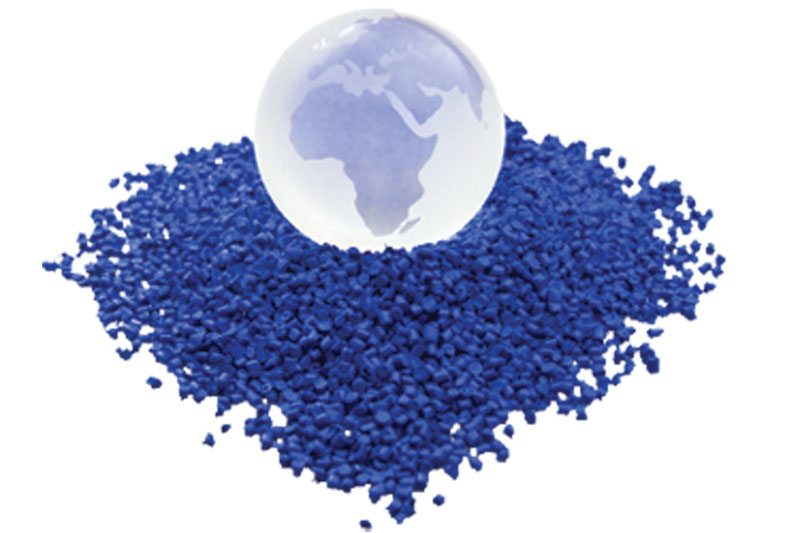
Photo courtesy of PolySource
The SPE International Polyolefins Conference in Houston, Texas, USA, at the end of February 2015 celebrated its 40th anniversary—for “Four Decades of Advances in Polyolefin Technology.” The conference was organized by the SPE South Texas Section, Polymer Modifiers & Additives Division, Thermoplastic Materials and Foams Division, and Medical Plastics Division. There were 637 people attending (the largest attendance in the last 15 years), 64 exhibitor booths, two networking socials, 84 outstanding technical papers, a very successful technical tutorial (135 people), and a great student poster contest.
Conference organizers say excitement was evident at the conference as inexpensive natural gas and now low oil prices propel the polyolefins industry around the world and in the USA. There are major investments scheduled in the USA, China, and other places in the world in coming years that will dramatically expand many sectors of the chemical and manufacturing industry.
During the conference, several awards were given out: the Polyolefins Conference Hall of Fame Service Award, a Special Recognition Award, six student scholarships, and four poster contest awards. Tom Walsh received the Polyolefin Conference Hall of Fame Service Award for over 27 years of continuous and dedicated service to the Conference. Walsh has served as conference chair, plenary chair, exhibitor chair, and publicity chair, as well as in many other leadership positions, and he has dedicated thousands of hours to make the conference a great success.
The Polyolefins Conference has become known as one of the best places to conduct business, to learn about new technology, and to network. Thus a Special Recognition Award was also given to Brandon Cleary, who has done an outstanding job the last eight years as the exhibitor chair for the Conference, improving the booth layouts, exhibition floor activities, and value for the exhibitors.
Meanwhile, the SPE South Texas Section and Division organizers are doing more during the rest of the year to support university polymer programs with profits from the Conference via endowed scholarships, aid for buying equipment, and supplementing student chapter operating funds.
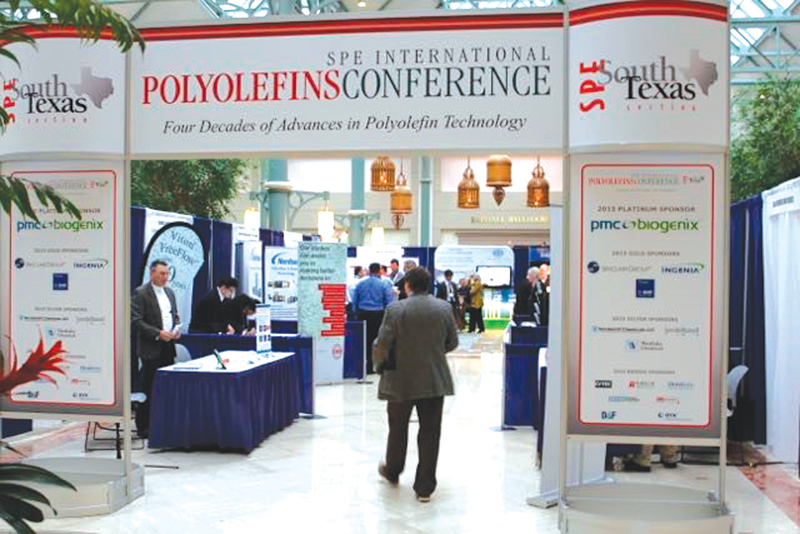
Photo courtesy of SPE Polyolefins Conference
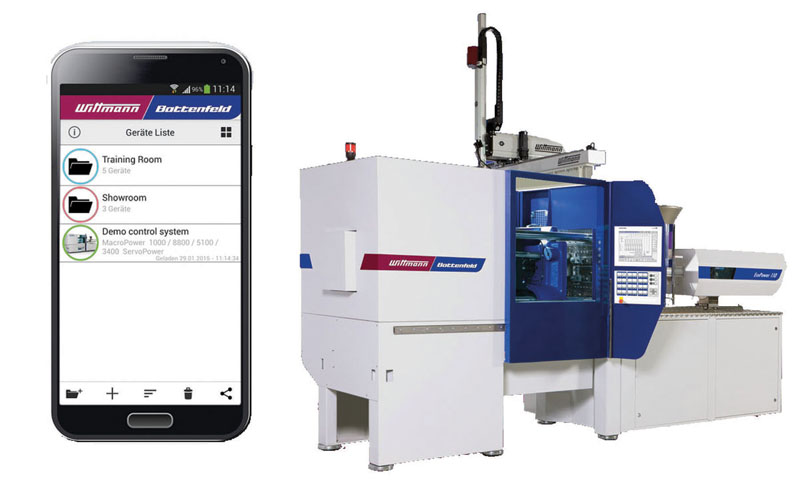
Photo courtesy of Wittmann Battenfeld
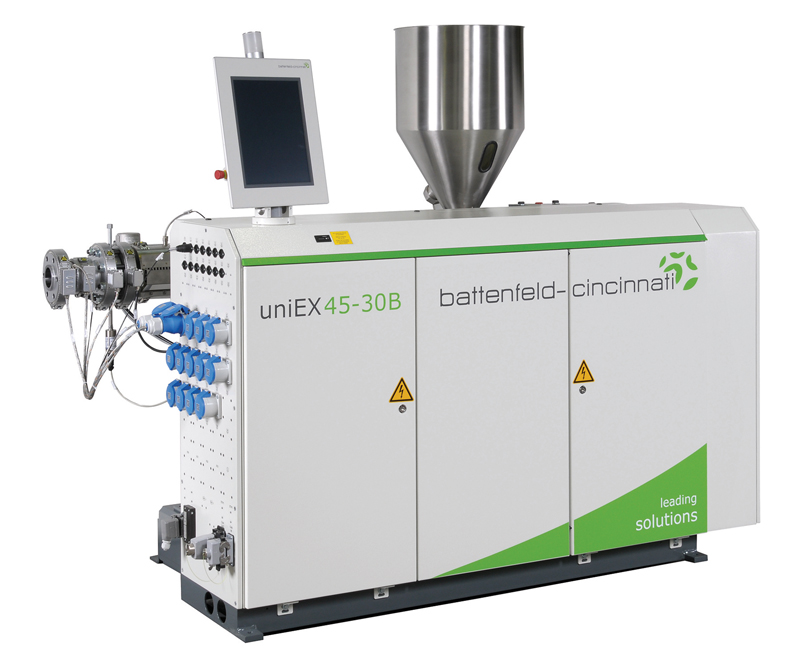
Photo courtesy of battenfeld-cincinnati
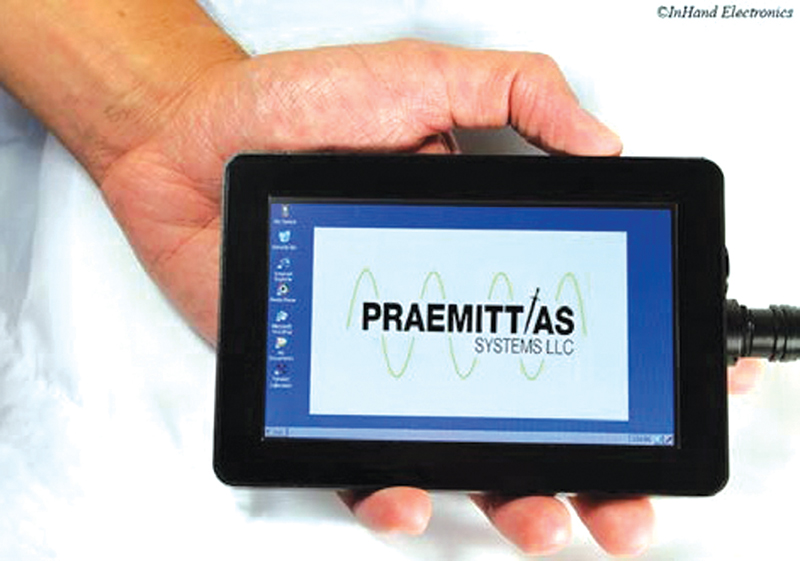
Photo courtesy of InHand Electronics
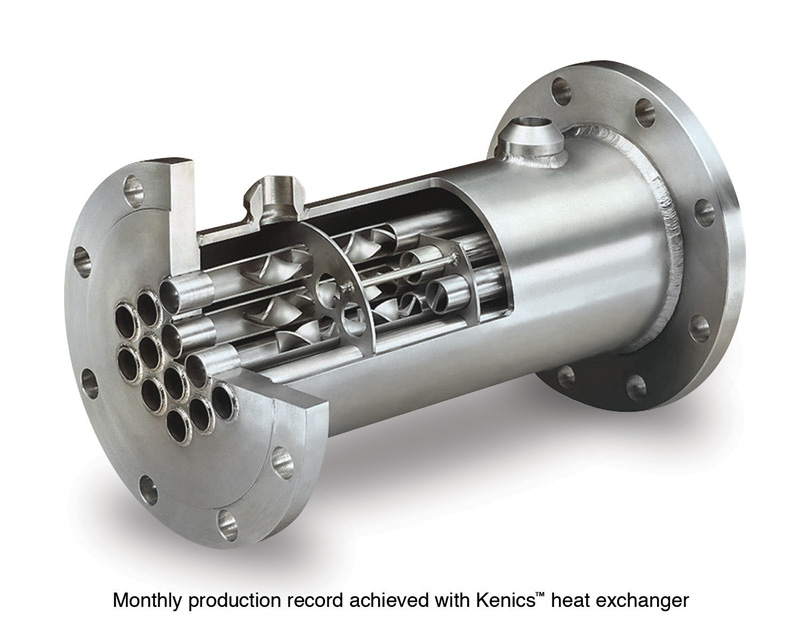
Photo courtesy of NOV
PolySource, LLC, a privately held, value-added distributor of thermoplastic resins and compounds, announced that it signed an agreement with Hyosung Group of South Korea to be an authorized distributor for polyketone in North America. Hyosung is the world’s only producer of polyketone.
Polyketone is highly crystalline with a compact crystal structure resulting in excellent impact resistance, abrasion resistance, chemical resistance, fuel resistance, and gas barrier properties. “This unique performance profile offers designers, across multiple industries, a new material solution to meet tough application requirements,” says Bill Feldman, executive vice president of PolySource.
With its excellent wear resistance and coefficient-of-friction performance and good hydrolysis resistance, polyketone is said to be a good fit for materials handling, gears, and industrial applications, replacing lubricated nylons and acetals (POMs). Polyketone’s excellent fuel resistance and gas barrier properties make it an ideal candidate for automotive fuel system components as well. It offers two times the impact strength and a 30% improvement in chemical resistance compared with nylon, whereas its wear resistance is about 14 times greater than POM’s.
Hyosung unveiled polyketone deployed on a commercial scale for the first time in the world in November 2014. The company had already established a polyketone polymerization plant with an annual production capacity of 1,000 tons in Ulsan, South Korea, in 2012.
BASF has made a bio-based polytetrahydrofuran (PolyTHF® 1000) available for the first time. The company is now providing this chemical intermediate to selected partners for testing in various large-scale applications.
“The bio-based PolyTHF 1000 is identical in quality to the petrochemical-based product,” says Andrej Brejc, director of Renewable Diols, from BASF’s Intermediates division. “The opportunity to expand the range of products and applications made from renewable raw materials allows us and our partners to further explore the long-term market acceptance of this innovative technology.” PolyTHF is derived from 1,4 butanediol (BDO), which BASF has produced under license from Genomatica.
Polytetrahydrofuran is primarily used to make elastic spandex fibers for a large variety of textiles, including underwear, outerwear, sportswear, and swimsuits. The material is mainly applied as a chemical building block for thermoplastic polyurethane, which is used to make parts of ski boots and skates, shoe soles, and instrument panel skin for automotive applications—as well as hoses, films, and cable sheathing. It’s also used as a component of thermoplastic polyetheresters and polyetheramides. Other applications include cast elastomers, which are used, for example, for the production of wheels for skateboards and inline skates.
Wittmann 4.0 is the implementation of an industrial Ethernet between a central hub (the Wittmann Battenfeld injection molding machine) and various connected devices (like Wittmann Battenfeld robots and peripheral equipment). It’s a major challenge to combine and integrate miscellaneous and widely varying data protocols with an industrial Ethernet, says the company.
Wittmann 4.0 uses a standardized communication protocol between all the company’s peripheral equipment, robots, and molding machines. The Wittmann 4.0 display at the NPE2015 show demonstrated the connections between a B6 machine controller and an R8.3 robot, a Tempro Plus D temperature controller, a Flowcon Plus automatic flow controller, and a Gravimax G14 blender.
In addition, the new WiBa QuickLook app from Wittmann Battenfeld provides a very simple and comfortable way to check on the status of injection molding machines and robots via a smartphone. The new app links up with the latest software versions of Wittmann R8.3 robots and Wittmann Battenfeld Unilog B6 control systems. Through this link, the production data and condition of the most important equipment operating in a given production cell can be checked quickly and easily, says the company.
Polymax Thermoplastic Elastomers, Inc. (PolymaxTPE), a manufacturer and custom compounder of thermoplastic elastomer (TPE) materials, announced the availability of an expanded line of premium quality TPE for use in extreme-condition applications.
Developed using new product formulations and custom-engineered production machinery, the company’s “extreme” materials are designed to perform under very high and very low temperatures, during medical sterilization procedures and demanding environmental conditions. Some of the new TPEs are formulated to endure exposure to ultraviolet light, abrasion, caustic substances, and flammable conditions. This new collection was featured at NPE2015.
“As a leader in thermoplastic elastomer material formulation and compounding, we continue to focus on the needs of our customers by expanding the range of technical performance of our products,” says PolymaxTPE President Martin Lu. “PolymaxTPE materials that can endure rigorous conditions are particularly important in the automotive, healthcare, and industrial market segments.”
The latest high-density polyethylene pressure pipe grade from Total is said to combine processability with elevated temperature performance and long-term stability to raise processing performance to a higher level. XSene XRT70 incorporates the best of the company’s expertise in materials for gas and water pressure pipe, accumulated from over more than 30 years in serving this industry.
XSene XRT70 is a PE-RT (polyethylene with raised temperature resistance) Type II HDPE produced using Total’s Advanced Double Loop technology. High extrusion speeds can be reached at low extrusion temperatures and without any melt fracture while keeping an excellent surface finish, the company says.
Recent industrial production runs at key customers producing multilayer composite pipes have demonstrated the productivity gains made possible by this resin. These pipes have inner and outer layers of PE-RT that encase a core layer of aluminum foil.
In Poland, established hot and cold pipe system manufacturer Sigma-Li has used XSene XRT70 to achieve stable pipe production at high line speeds of 40 m/min. for 16-mm diameter HDPE-aluminium composite pipes for central heating systems. They’re produced on a battenfeld-cincinnati uniEX 45-30 line that the company recently installed. In China, the same high line speed reportedly was achieved with the same material for a 20-mm diameter PE-RT pipe.
Archroma announced that its halogen-free flame-retardant powder coating additive, Pekoflam® HFC, is officially recognized as a manufacturer-certified product by the Oeko-Tex® Association. Being reportedly the first powder additive to be listed for coating applications, Pekoflam HFC will support textile producers and protective clothing manufacturers’ efforts to achieve both Oeko-Tex 100 compliance and effective fire protection for their finished goods.
Pekoflam HFC p is an organic phosphorous/nitrogen compound with reportedly excellent performance with synthetic materials, including polyamide fibers and blends. The unique chemistry displays higher efficiency compared to commonly used nitrogen- and/or phosphorous-based chemicals. It’s also applicable in water-based systems, as well as in Oeko-Tex Standard 100 compliant “green” solvent-based coating systems; hence it offers higher flexibility to fabric coaters serving different end-use segments. The ecological profile enables use in both indirect and direct skin-contact applications.
“The primary advantage of Pekoflam HFC is its ability to combine the effects and properties of selected halogenated and non-halogenated technologies in a fire-protection solution for various coating polymers,” comments Michael Schuhmann, global segment manager, Flame Retardants, Textile Specialties Business, Archroma. It “thus offers a sustainable long-term alternative for synthetic textile applications, meeting the criteria of the Oeko-Tex Standard 100 and responding to the general trend towards more environmentally compatible materials and end-products that pose significantly lower risks to health.”
Oeko-Tex criteria provide manufacturers in the textile and clothing industry with a uniform benchmark on a scientific basis for the evaluation of potentially harmful substances in textiles. The Oeko-Tex label indicates the additional benefits of tested safety for skin-friendly clothing and other textiles to interested end-users. The test label therefore provides an important decision-making tool for purchasing textiles.
Products used in rugged environments ranging from industrial to outdoor to medical have one clear thing in common: the need for toughness and durability. This is the “real-world” situation InHand Electronics, Inc. faced when developing its Hydra-F6™ tablet and the display unit for Praemittias Systems’ Wolfhound Cooperative Radio Direction Finding System®.
“For our rugged tablet and radio system we required a commercially available material that was durable, moldable, [and] resistant to chemicals and withstood impact testing,” explains Tien Chuang, senior mechanical engineer, InHand Electronics. “We found what we were looking for in Makrolon® 9415 polycarbonate from Bayer MaterialScience.”
InHand created a handheld display head for the Wolfhound device. The display head provides a touch-screen LCD in a durable, lightweight package tethered to the main Wolfhound unit, enabling users to easily interact with the system while in environmentally harsh (e.g., wet, hot, cold, humid, and/or dirty) conditions. Incorporating an integral GPS for geolocation, the system detects signals of interest and visualizes the information on the handheld display.
“These applications benefit from the customization options and outstanding toughness of the poly- carbonate, as well as its processability,” says Kevin Dunay, market segment manager, Electrical, IT & Appliance, Polycarbonates–North America, Bayer MaterialScience LLC.
www.bayermaterialsciencenafta.com
Solvay Specialty Polymers announced at JEC Europe that 13 of its advanced polymer grades were included in the latest release of the Digimat® platform, an expansive materials database and simulation tool from e-Xstream engineering, an MSC Software company. The additional polymer grades from Solvay now allow Digimat to offer greatly expanded capabilities for computer design and simulation of fiber-reinforced composite parts that target automotive, electronics, food-contact, and other applications.
The 13 new additions to the simulation platform’s Digimat-MX® database draw from Solvay’s Amodel® polyphthalamide, Ixef® polyarylamide (PARA), Veradel® polyethersulfone (PESU), and Ryton® polyphenylene sulfide product families. A selection of mechanical properties are delivered across a range of temperatures to precisely meet customer requirements. Notably, Solvay’s Ixef and Veradel materials are said to be the first PARA and PESU resins to ever appear in e-Xstream’s materials database, which provides computer modeling for designing fiber-reinforced thermoplastic parts. Other grades from Solvay’s AvaSpire® polyaryletherketone and KetaSpire® polyetheretherketone product lines were added to the Digimat-MX® database in 2013.
More than just software, Digimat is a material and structure modeling platform that allows engineers to perform micro- and macro-scale analyses of a broad range of composite materials to calculate their mechanical, thermal, and electrical properties—and predict how they will perform in applications. Digimat-MX is a detailed database that provides the platform with accurate material models for simulating the design and performance of select commercial reinforced plastics.
A long-term partner of e-Xstream, Solvay has used Digimat-MX software internally to offer advanced computer modeling of fiber-reinforced designs as a service to its customers. The expanded Digimat-MX database now allows customers to perform their own computer simulations based on Solvay materials. To help customers fully exploit the properties of its high-performance polymers in product design, Solvay says it has developed dedicated computer-aided engineering procedures based on Digimat that have undergone thorough internal validation at its European laboratory, based in Brussels, Belgium.
A large specialty chemical manufacturer located in the U.S. state of Ohio was experiencing unsatisfactory production levels due to the plant’s old, outdated, inefficient equipment. The manufacturer was looking to upgrade the process equipment to increase the overall level of production. An increase in output was needed to keep up with demand. The Kenics brand heat exchanger from National Oilwell Varco (NOV) was recommended as a critical component in the process.
The Kenics heat exchanger reportedly provided more efficient, cost-effective processing of the chemical. At the heart of the heat exchanger is static mixer technology which offers the highest available heat transfer coefficients for fast, uniform heat transfer. NOV personnel engineered, manufactured, and installed the heat exchanger system, which was easily installed right out of the box, saving time and money.
The Kenics heat exchanger consists of a continuous string of static mixer elements within each heat exchanger tube. Fluid flow is directed radially toward the pipe walls and back to the element, regardless of velocity. Additionally, momentum reversal and flow division also contribute to mixing efficiency. All processed material is continuously and completely intermixed to eliminate radial gradients in temperature and material composition. As a result, Kenics heat exchangers provide predictable, controlled mixing and the most efficient form of thermal transfer available today, NOV says.
By using Kenics static mixer elements in each heat exchanger tube, the film build-up commonly associated with empty tubes is significantly reduced. Process fluid is continuously pushed from the center of each tube to the wall and back to the center, eliminating thermal gradients and boosting the inside film coefficient. The static mixer elements are furnace-brazed to the pipe walls. The resulting enhanced surface area and internal flow division and radial mixing action dramatically enhance transfer rates. Removable elements are also available for applications requiring periodic cleaning during product changeovers.
